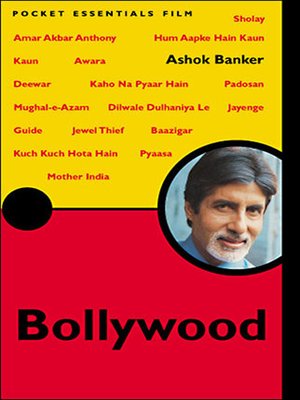
Sign up to save your library
With an OverDrive account, you can save your favorite libraries for at-a-glance information about availability. Find out more about OverDrive accounts.
Find this title in Libby, the library reading app by OverDrive.



Search for a digital library with this title
Title found at these libraries:
| Library Name | Distance |
|---|---|
| Loading... |
Check it out. Bollywood, as the Bombay-based Hindi film industry is
affectionately nicknamed, is the new cool in international cinema. The
world’s most prolific film industry has always been regarded with dubious
interest by Western critics, film professionals and movie-goers. What
else can you expect from a genre that requires every film to have a young
good-looking romantic lead couple, half a dozen or more lengthy songs
lip-synched by actors to playback singers, costume changes every five
minutes and an utter disregard for most film narrative conventions? In
spite of these quirky peculiarities—or hell, maybe because of them—it
has come out of the kitsch closet and taken its place alongside the most
respected ethnic films on the planet.
Partly it’s a numbers game. India has the fastest population growth rate
in the world, the second largest population (over 1.1 billion at the last
count) and one of the highest percentages of youth between the ages of 12
and 24. As any Hollywood mogul will tell you over his California champagne,
that’s the magic age group that fills cinema halls and chews up the
movie tickets and popcorn everywhere in the world.
Look at some more figures... In 1985, a staggering 905 feature films
were produced in India. This figure was split up into several different ethnic
languages, the majority coming out of the Tamil-, Telegu- and Malayalam-
speaking states of South India. 185 of the films were in the Hindi
language and produced in the sultry Western Indian city of Bombay. It
wasn’t the peak—that was in 1991 when a record 215 films rolled out of
Bombay’s overworked processing labs—but it was still a mammoth output.
More than the sheer number of films, it’s Bollywood’s impact which is
immeasurable. If you’re used to Hollywood’s slick, overproduced product,
Hindi films will seem corny, kitsch, even crude at times. On the other
hand, if you like music with your movies, the way Australian whizkid
Baz Luhrmann did in his spectacular Romeo+Juliet and Moulin Rouge,
you’re in for a big treat. In fact, Luhrman flew to Bombay for the release
of Moulin Rouge where he confessed candidly that the film was inspired
by Bollywood.







